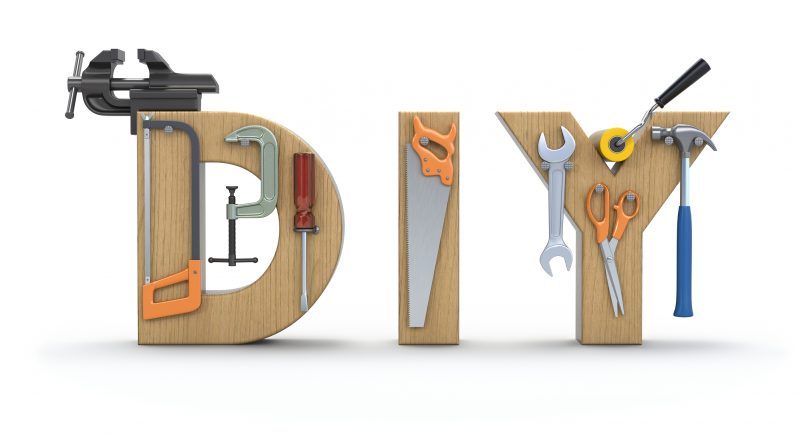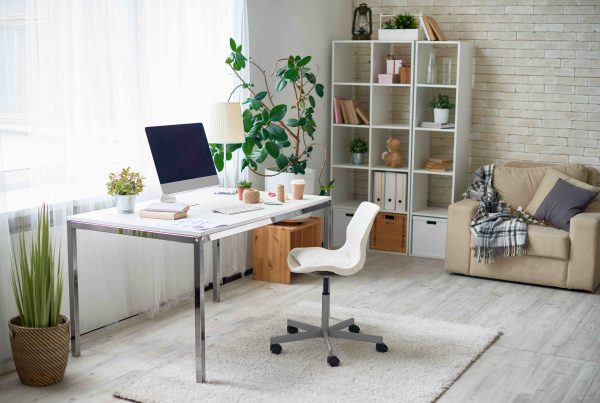Purchasing a property is a significant investment and whether you’re a home-owner or landlord, learning how to take care of some home handyman basics can save you money. Of course, lots of jobs should only be tackled by professionals – but when it comes to the little odd jobs that can stop your house from being its best, a few basic skills can help you keep things looking great.
Some basic DIY tips and tricks can help you get through some minor repairs and remind you that you don’t have all the skills to take on the really big jobs!
Holes In The Wall
Renovations and repairs can mean cutting holes in your plasterboard to make way for wiring or other works.
If it’s happened at your place, try these tips to install a new piece of plasterboard for a new-look wall:
Use a piece of wax paper to tape over the hole – then, with permanent marker, trace around the edges. Cutting out the exact shape will be easy and you can use that as a cutting guide to hold up against the new plasterboard.
1. Find a stud
Why spend money on an expensive stud finder when you can find it yourself?
But what is a stud? They are the vertical beams that support walls – and they provide a solid support to anchor heavy furniture or artwork.
You should find a stud on either side of the window – they are also next to electrical boxes for switches and outlets. Studs tend to be set at regular spaces around the room – once you’ve found one, you should be able to measure the rest. Another stud finding tip? Tap the wall. It should have a hollow sound. Where the studs are, the wall will sound more dense.
2. Fix a loose tile
Loose or wobbly tiles are the start of broken tiles, so this is a great example of a minor repair job preventing more costly replacements.
Start by running a pre-heated iron over any loose tiles and surrounding area to help loosen the adhesive. Prise the tile out gently.
Make sure the area underneath is clean by wiping it with an alcohol-based cleaning fluid, then use a putty knife to gently scrape any leftover putty.
Apply a fresh coat of tile adhesive to the gap and the back of the tile before replacing the tile carefully. A rolling pin is a great tool to help press the tile back into place, being sure to remove any air bubbles.
Use a clean, damp cloth to wipe away any excess adhesive.
For floor tiles, place a heavy object, such as a stack of books, to weigh down the tile.
3. Re-caulk your shower, sink or bathtub
Is your sink, shower or bathtub bothered by leakage?
Caulking is simply a line of putty or gel placed where the basin meets the wall or floor. Caulking loses its effectiveness over with wear and tear so aim to re-seal once a year.
Start with a plastic putty knife to remove old caulking, Clean the surface with rubbing alcohol, then place masking tape above and below where you apply the caulk for a clean, even-looking line. With many caulking choices available, choose one with silicone to help prevent mildew.
Load into the caulking gun and simply follow the directions on the packet, making sure to depress the trigger of the caulking gun steadily and evenly.
Use your finger to flatten the line, remove excess caulk, then peel off masking tape. For effective results, let the caulk dry for a couple of days before exposing it to water and moisture.
4. Fix a leaky tap
The details may vary from model to model, depending on your tap but the basics are the same.
Number one? Turn the water off. Turning off the tap is one thing but turning off the water at the main source (usually a small valve on the pipes under your sink) is also required.
A flat-head screwdriver will help you remove the tap handle. Then use a wrench to loosen the packing nut. Remove the stem, then check for any damage. Do the same to the O-ring and the washer.
Replace any damaged parts (make sure you buy the same size replacements) and reassemble it in the reverse order of how you took it apart.
Turn the water back on, then test it. If it’s still leaky and you’ve checked your handy work, the problem might run deeper and you’ll need to speak to a trusted plumber.
5. Un-block a drain
This can be caused by a number of problems. Try vinegar, hot water and baking soda to start with — soft blockages, such as grease, should be washed away.
Next step? A plunger.
Half-fill the sink with fresh water. Then plunge the sink, with the rubber cup over the plughole to create a vacuum.
If it’s still clogged, the next thing to check is the trap. Place a or large saucepan under your pipes and unscrew the trap – that curved piece of pipe that connects your sink to the vertical pipe. If it’s too tight to do by hand, use a wrench.
Clear anything clogging the pipe and reconnect the pipes before turning the water back on.
If all that fails, it’s time to dial that plumber!
6. Painting Made Easy
Whether you’re touching up a few spots of revamping the entire house, making painting easier can save you lots of money.
- Start with a damp sponge to clean dust, dirt and grease. A little sugar soap in the water helps clean easily.
- Use masking tape to protect the trims from any messy brushwork.
- Prime first. It’s more work – yes. But applying a coat of primer helps your final paint application go further – and look better.
- Use a smaller paintbrush to paint near the masked off areas around doors and windows and skirting boards. Once all that’s done, filling in the main walls with a roller is easy and fast. Be patient and give yourself time to allow for paint to dry fully before adding a second coat.
- Always wash your brushes and equipment as soon as possible after finishing. The longer you wait, the harder it will be.
If you need advice for a home loan, business or commercial loan, self-managed super fund loan, or a vehicle or equipment finance loan, speak to a broker at Lending Specialists. We have a wealth of experience under our belt and a robust network to connect you to the right industry professional for the loan you need.










